实验结论
1.实验任务1
task1.c源代码
#include <stdio.h>
#include <stdlib.h>
#include <time.h>
#define N 5
int main() {
int number;
int i;
srand(time(0)); // 以当前系统时间作为随机种子
for(i = 0; i < N; ++i) {
number = rand() % 100 + 1;
printf("20490042%04d\n", number);
}
return 0;
}
运行结果
![image]()
问题回答
- Q1:解释lin13代码的功能。
- A1:在
[1,100]里取一随机整数存放在number里。
- Q2:解释line14使用格式符%04d起到什么作用。
- Q3:这个程序的功能是什么?
- A3:随机生成五个202400420001~202400420100的学员编号。
2.实验任务2
task2.c源代码
#include <stdio.h>
int main() {
int choice, quantity;
float total_price = 0, amount_paid, change;
while (1) {
printf("\n自动饮料售卖机菜单:\n");
printf("1. 可乐 - 3 元/瓶\n");
printf("2. 雪碧 - 3 元/瓶\n");
printf("3. 橙汁 - 5 元/瓶\n");
printf("4. 矿泉水 - 2 元/瓶\n");
printf("0. 退出购买流程\n");
printf("请输入饮料编号: ");
scanf("%d", &choice);
if (choice == 0)
break;
if (choice < 1 || choice > 4) {
printf("无效的饮料编号,请重新输入。\n");
continue;
}
printf("请输入购买的数量: ");
scanf("%d", &quantity);
if (quantity < 0) {
printf("购买数量不能为负数,请重新输入。\n");
continue;
}
switch (choice) {
case 1:
case 2:
total_price += 3 * quantity;
break;
case 3:
total_price += 5 * quantity;
break;
case 4:
total_price += 2 * quantity;
break;
}
printf("请投入金额: ");
scanf("%f", &amount_paid);
change = amount_paid - total_price;
printf("本次购买总价: %.2f 元\n", total_price);
printf("找零: %.2f 元\n", change);
total_price = 0;
}
printf("感谢您的购买,欢迎下次光临!\n");
return 0;
}
运行结果
![image]()
问题回答
- Q1:line53代码的用途?如果去掉,会有什么影响?
- A1:将购买总价重置为0,如果去掉会导致总价=每次购买总价之和。
- Q2:line17-18, 使用了break语句;line20-23, line28-31, 使用了continue语句。在循环中使用break和continue有什么区别?
- A2:break是中断循环,continue则是跳过该循环的剩余代码进入下一次循环。
- Q3:line33-44,使用了switch语句实现多分支。通常情况下,在switch语句中使用default子句有助于排查代码运行时错误,这个代码中,是否有必要增加default子句?你的答案和理由。
- A3:没有必要,前面代码对
choice的值进行了规范,只能为1~4。
3.实验任务3
task3.c源代码
#include<stdio.h>
int main()
{
char color;
scanf("%c",&color);
getchar();
while(color!=EOF)
{
switch(color)
{
case 'r':printf("stop!\n");break;
case 'g':printf("go go go\n");break;
case 'y':printf("wait a minute\n");break;
default :printf("something must be wrong...\n");break;
}
scanf("%c",&color);
getchar();
}
return 0;
}
运行结果
![image]()
4.实验任务4
task4.c源代码
#include<stdio.h>
int main()
{
double x,all=0,max,min;
printf("输入今日开销,直到输入-1终止:\n");
scanf("%lf",&x);
getchar();
max=x,min=x;
while(x!=-1)
{
if(x>0&&x<20000)
{
all+=x;
if(x>max)
max=x;
if(x<min)
min=x;
}
scanf("%lf",&x);
getchar();
}
printf("今日累计消费总额:%.1lf\n今日最高一笔开销:%.1lf\n今日最低一笔开销:%.1lf",all,max,min);
return 0;
}
运行结果
![image]()
5.实验任务5
task5.c源代码
#include<stdio.h>
#include <stdlib.h>
#include <time.h>
#define N 3
int main()
{
int day,i,gus;
printf("猜猜2025年4月哪一天是你的lucky day\n");
srand(time(0));
day = rand() % 30 + 1;
for (i = 0; i < N; i++)
{
if (i == 0)
printf("开始喽,你有三次机会,猜吧(1~30):");
else
printf("再猜(1~30):");
scanf("%d", &gus);
if (gus > day)
printf("你猜的日期晚了,你的lucky day在前面哦\n");
else if (gus < day)
printf("你猜的日期早了,你的lucky day还没到呢\n");
else
{
printf("哇,猜中了:-)\n");
break;
}
}
if (i == 3)
printf("次数用完啦。悄悄告诉你,4月你的lucky day是%d号\n", day);
return 0;
}
运行结果
![image]()
![image]()
6.实验任务6
task6.c源代码
#include<stdio.h>
int main()
{
int n,i,j;
printf("input n: ");
scanf("%d", &n);
for (i = n; i >0; i--)
{
for (j = 0; j < n-i; j++)
printf(" \t");
for (j = 0; j < 2*i-1; j++)
printf(" O \t");
for (j = 0; j < n - i; j++)
printf(" \t");
printf("\n");
for (j = 0; j < n - i; j++)
printf(" \t");
for (j = 0; j < 2*i-1; j++)
printf("<H>\t");
for (j = 0; j < n - i; j++)
printf(" \t");
printf("\n");
for (j = 0; j < n - i; j++)
printf(" \t");
for (j = 0; j < 2*i-1; j++)
printf("I I\t");
for (j = 0; j < n - i; j++)
printf(" \t");
printf("\n");
printf("\n");
}
return 0;
}
运行结果
![image]()
![image]()
实验总结
- 强化了对选择结构和循环结构的理解,以及
while if switch的运用
- 通过设置断点,可以观察变量的变化情况,以便对程序运行的错误进行排查
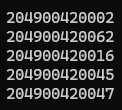
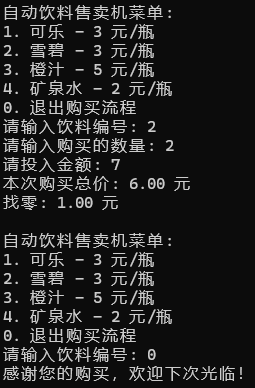
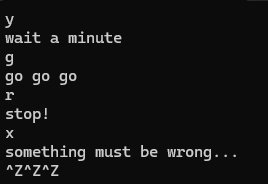
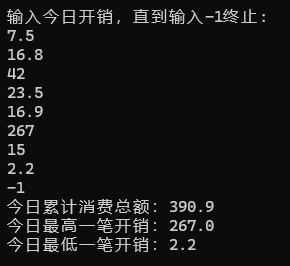
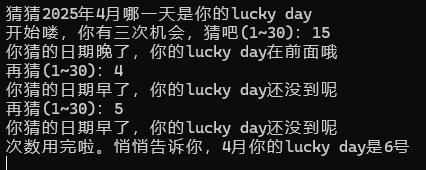
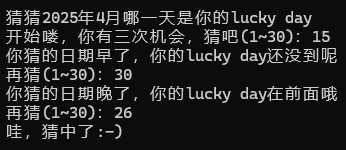
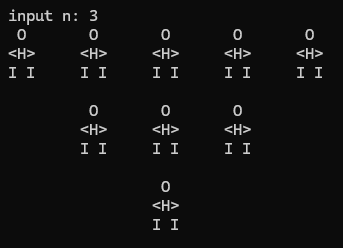
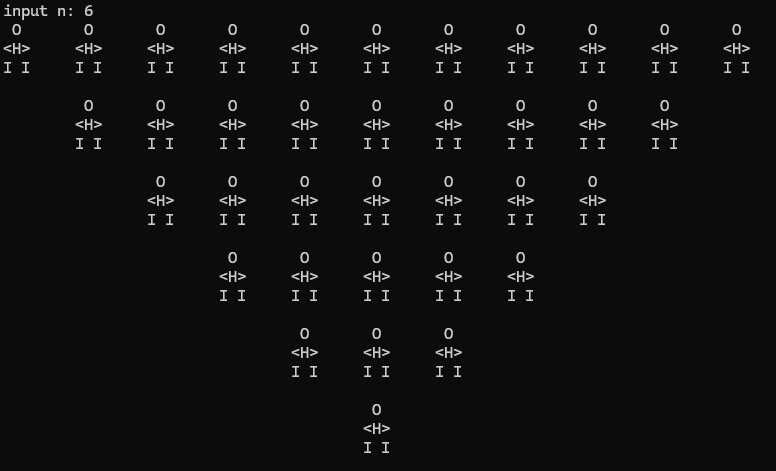


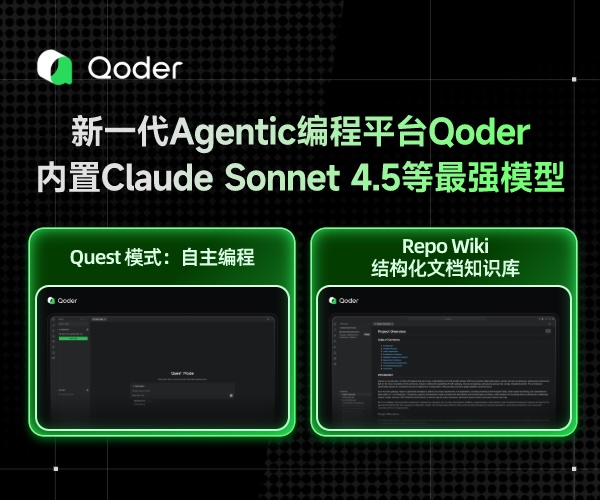
 浙公网安备 33010602011771号
浙公网安备 33010602011771号